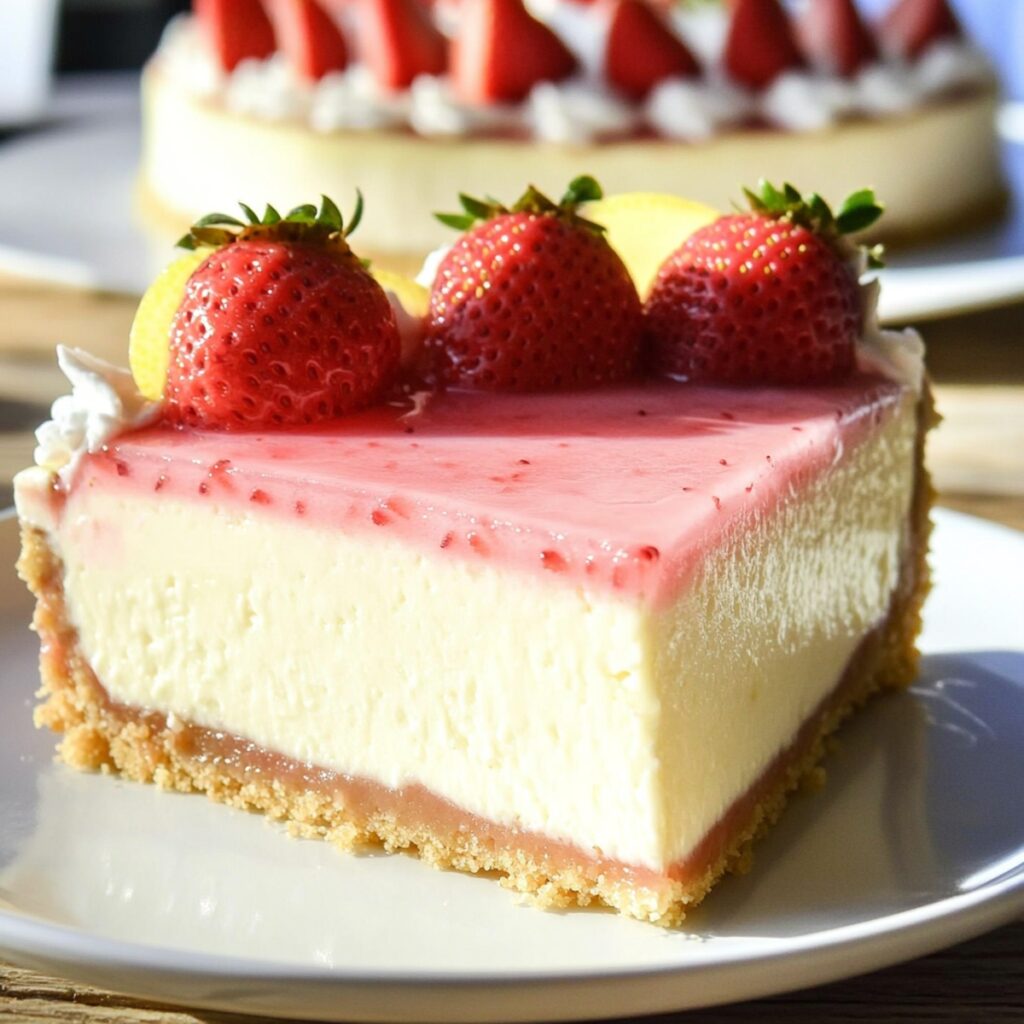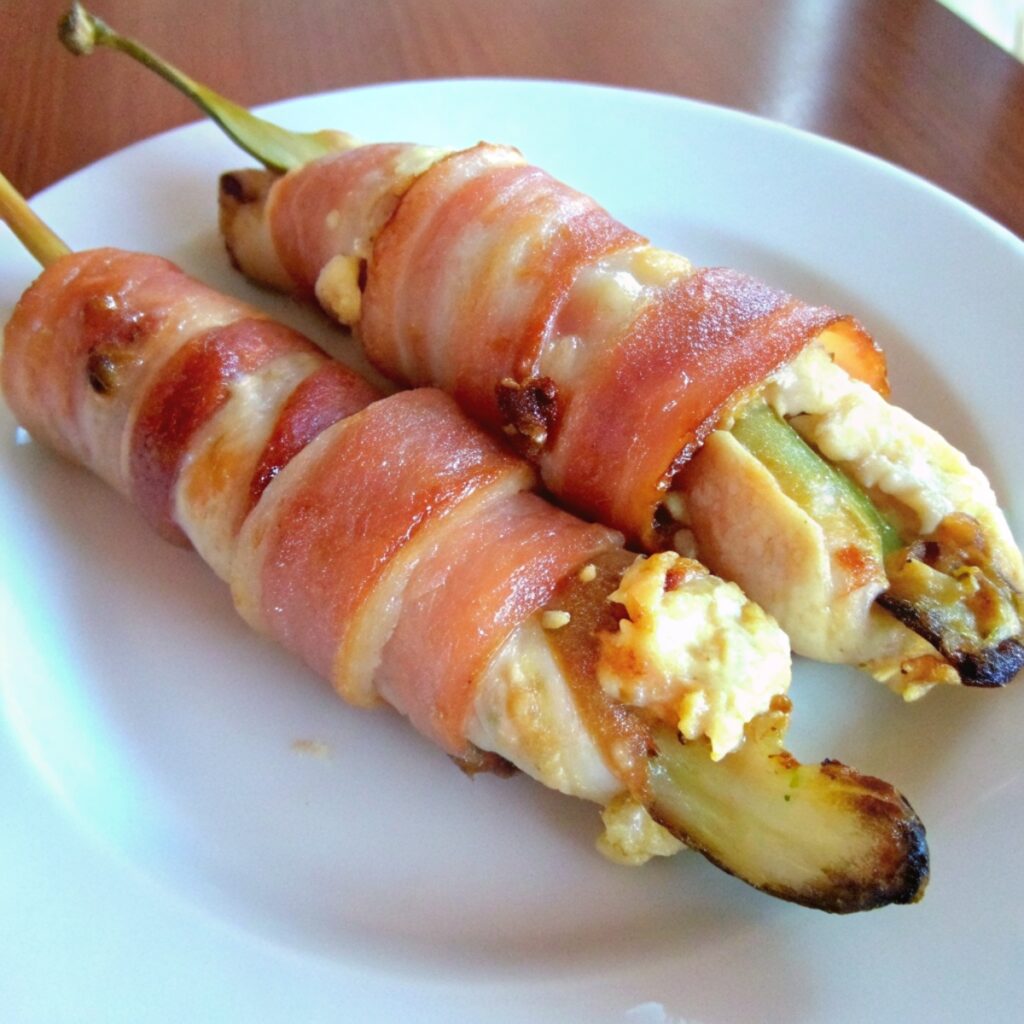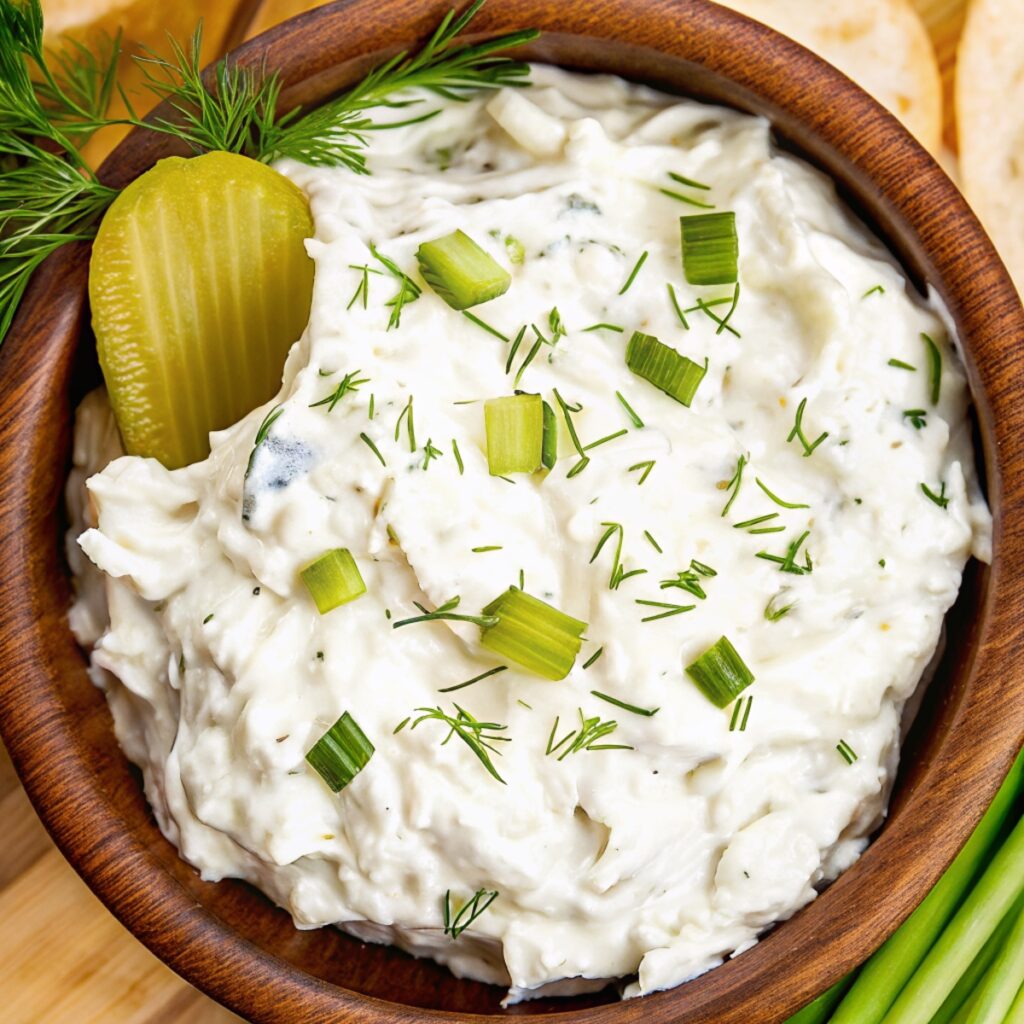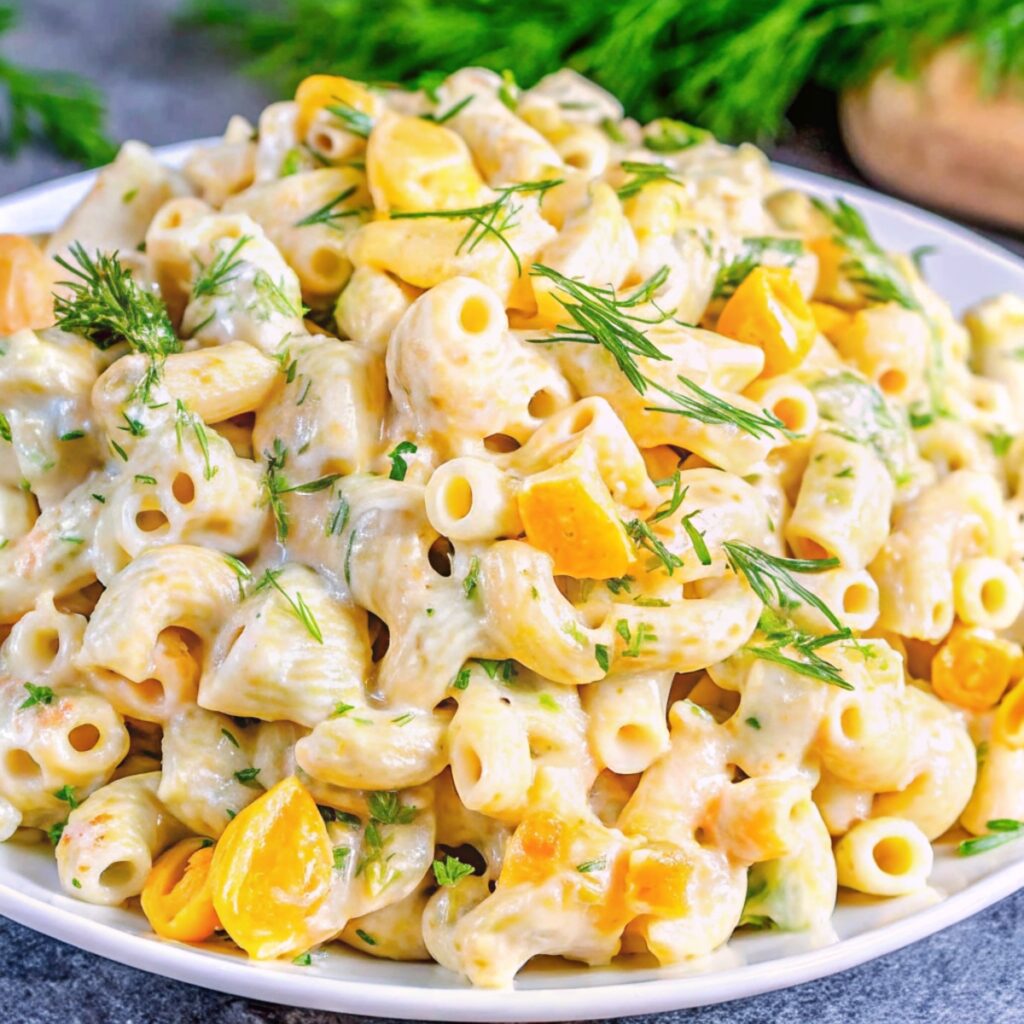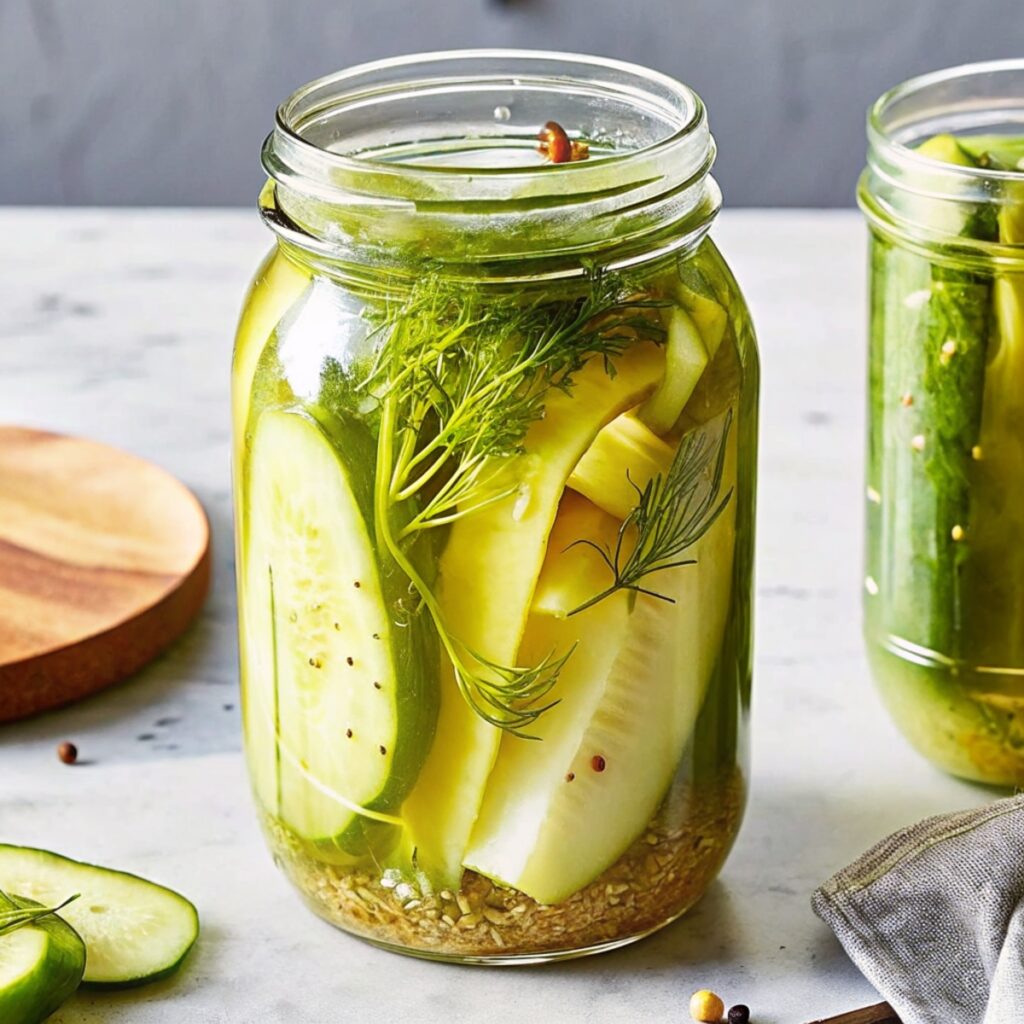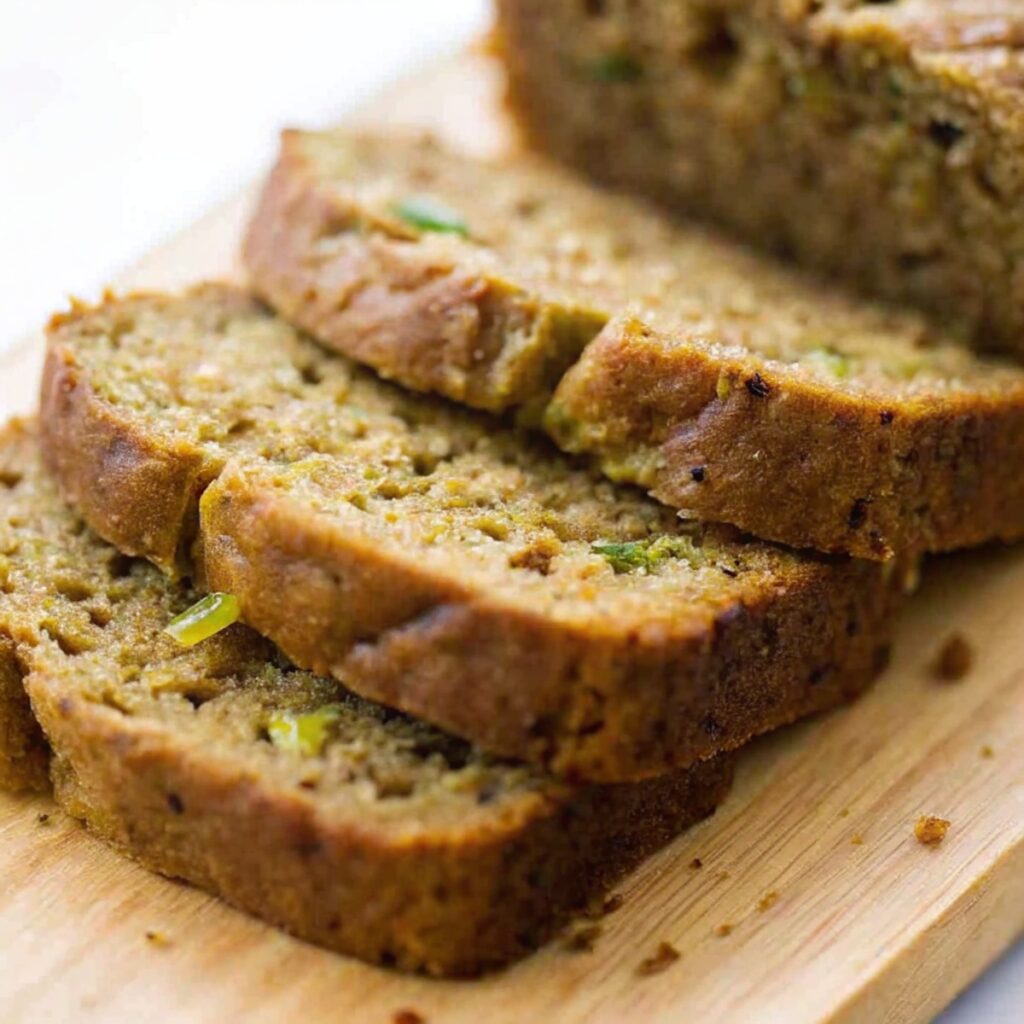Today, we’re diving into the art of layered, no-bake cheesecakes—a skill that combines precision with creativity. While the finished Strawberry Lemon Cheesecake is a showstopper, the real technique lies in mastering stabilized, airy mousses and harmonious layers. By learning how to work with gelatin, balance tangy citrus with sweet berries, and build textures that slice beautifully, you’ll gain confidence not only in no-bake cheesecakes but in a whole world of elegant desserts. This recipe is more than a treat; it’s a lesson in the science of dairy, the role of gelatin as a stabilizer, and the importance of building complementary flavors. Through each step, you’ll see how knowing the “why” behind the process helps you problem-solve and create desserts that impress both the eye and the palate. Let’s turn your kitchen into a pastry workshop and make a cheesecake that’s as enjoyable to create as it is to eat!
How to Master Strawberry Lemon Cheesecake
Click here to get printable version
The Tools & Ingredients You’ll Need
- 20cm (8-inch) springform or loose-bottom cake tin
- Mixing bowls (at least 2-3, for various layers)
- Hand mixer and/or stand mixer
- Rubber spatula
- Small saucepan
- Microwave-safe bowl (for blooming gelatin)
- Measuring cups and spoons
- Kitchen scale (recommended for best accuracy)
- Ingredients:
- 300g digestive biscuits
- 60g melted butter
- 2 tbsp light brown sugar
- 14g gelatin powder (7g for each layer)
- 120ml water (divided for blooming gelatin)
- 500g total cream cheese (split between layers)
- 500g total mascarpone (split between layers)
- 150g caster sugar (for lemon layer)
- 100g sugar (for strawberry layer)
- Juice of 1 lemon + 1 tsp lemon extract
- 3 tsp cornflour
- 1 tsp vanilla extract
- 200g strawberries
- 600ml whipped cream (divided between layers)
- Whipped cream for decorating
Step-by-Step Instructions
- Mix the crushed digestive biscuits, melted butter, and light brown sugar until the crumbs are evenly moistened (the butter binds the crust, ensuring it sets firmly). Press into the base and sides of your prepared tin. Refrigerate to set the crust while you prepare the filling (chilling solidifies the butter, creating a stable base).
- Bloom the gelatin: whisk gelatin powder with water and let it sit for a few minutes (blooming allows gelatin grains to absorb water, ensuring smooth melting). Heat briefly in the microwave until dissolved but not boiling.
- For the lemon layer, beat mascarpone, cream cheese, caster sugar, lemon juice, and lemon extract until smooth (blending ensures a creamy, lump-free texture, and the lemon brightens the flavor). In a separate bowl, whip the cream to soft peaks, add cooled gelatin, and beat to stiff peaks (the gelatin stabilizes the whipped cream, so the layer holds its shape). Gently fold the whipped cream into the cheese mixture to keep the texture light. Spread over the crust, smooth the top, cover, and refrigerate for about 4 hours (chilling allows gelatin to set and flavors to meld).
- Make the strawberry compote: cook strawberries and sugar over high heat until juicy, then add lemon juice (this breaks down the fruit and concentrates flavor). Mix cornflour with water and add, whisking until thickened (cornflour thickens the sauce for stability in the cheesecake). Cool completely in the fridge before using.
- For the strawberry layer, beat mascarpone, cream cheese, remaining sugar, and vanilla until smooth. Stir in the cooled strawberry compote for natural color and flavor. Whip cream to soft peaks, add cooled gelatin, and whip to stiff peaks. Fold into the cheese mixture to keep it airy. Spread over the lemon layer, smooth the top, cover, and chill for another 4 hours (this layering ensures clean slices and distinct flavors).
- Before serving, decorate with whipped cream swirls. For best texture and flavor, chill the finished cheesecake for at least 8 hours in total. Store leftovers in the fridge for up to 3 days or freeze for longer storage (freezing works because the gelatin-stabilized filling prevents ice crystals from ruining the texture).
Understanding Ingredient Roles & Swaps
Every ingredient in this cheesecake plays a part in taste and texture. Digestive biscuits provide structure; if unavailable, try graham crackers or vanilla wafers. Mascarpone offers rich creaminess—full-fat ricotta can stand in, but drain it well first. Gelatin stabilizes the layers; if you’re vegetarian, use agar-agar (though the method and quantity differ). Strawberries can be swapped for raspberries or blueberries in season, adjusting sugar to taste. Lemon extract brightens the citrus, but grated zest or extra juice can substitute. Whipped cream gives the cheesecake its airy lift; in a pinch, coconut cream (chilled and whipped) can add a dairy-free twist. Understanding these roles helps you adapt the recipe confidently, even if your pantry is missing an item.
Balancing Flavors: What to Serve Alongside
This cheesecake shines as a star dessert, but thoughtful accompaniments can elevate your presentation. Serve with a simple coulis—blend extra strawberries and a touch of lemon for a tangy drizzle. Balance the sweetness with tart fruits such as fresh raspberries or a compote of mixed berries. For a textural contrast, offer almond biscotti or crisp lemon shortbread on the side. Pair with a cup of black tea or a glass of sparkling lemonade to cut through the richness, highlighting the cake’s refreshing citrus notes. Every element on the plate should enhance the cheesecake, not compete, allowing its layered flavors to take center stage.
Food Science: Storing Strawberry Lemon Cheesecake for Optimal Flavor
Proper storage is key to maintaining the delicate texture and flavor of your cheesecake. Once set, keep the cake tightly wrapped or in an airtight container in the fridge. The gelatin ensures the layers remain firm and sliceable for up to 3 days. For longer storage, freeze individual slices: wrap each in cling film, then foil, and label with the date. Thaw overnight in the fridge to avoid condensation or sogginess. Avoid storing at room temperature, as the dairy-based filling is sensitive to heat and may spoil. By understanding these preservation tips, you’ll enjoy fresh, luscious cheesecake even days after baking.
Technique Spotlight: Getting It Right Every Time
Successful layered cheesecakes hinge on a few key techniques. Always bloom gelatin thoroughly for a smooth, lump-free set; overheating can weaken its gelling power, while under-hydration leads to grainy layers. Whip cream just to stiff peaks—over-whipping turns it grainy, while under-whipping results in runny fillings. Fold gently to keep the mixture airy and prevent deflating the whipped cream. Let each layer set fully before adding the next; patience ensures clean slices and defined layers. Finally, use a knife dipped in hot water to achieve tidy cuts for serving—professional touches that make all your effort visible.
Adapting Your Technique for Seasonal Produce
This recipe is endlessly versatile, responding beautifully to the rhythm of the seasons. In spring, swap strawberries for rhubarb (adding a little extra sugar to offset tartness). Summer brings peaches or nectarines; just cook briefly for a compote. In autumn, try roasted apples or pears with a hint of cinnamon, while winter’s cranberry or blood orange can lend dramatic color and tang. Adjust sweetness and acidity to match your fruit, and experiment with herb infusions—like basil with strawberries or thyme with lemon—for a sophisticated twist. Seasonal adaptation keeps this cheesecake fresh and exciting year-round.
Frequent Asked Questions:
Why did my cheesecake layer not set properly?
If your cheesecake layer remains soft or runny, it’s likely due to improper gelatin preparation. Gelatin must be fully bloomed in cold water and then dissolved completely before being folded into the mixture. If added while too hot, it can cause curdling; if too cold, it creates lumps. Measure carefully and let each layer set fully in the fridge before adding the next for firm, sliceable results.
How can I prevent lumps in my cheesecake batter?
Lumps typically result from cold, unsoftened cream cheese or mascarpone. For a silky texture, always bring both to room temperature before mixing. Beat thoroughly with sugar before adding other ingredients. If any lumps remain, strain your mixture through a fine mesh sieve before folding in whipped cream. This ensures a luxuriously smooth and creamy finish in every bite.
Can I use sheet gelatin instead of powder? How?
Yes, you can substitute gelatin sheets for powder. Generally, 1 sheet (gold grade) equals about 2g of powder. Soak sheets in cold water until soft, then squeeze out excess water and dissolve gently in a small amount of warm liquid from the recipe. Cool slightly before incorporating. This swap maintains the stability and texture of your cheesecake without compromising flavor or set.
Why is my cheesecake grainy or weeping liquid?
Graininess often comes from over-whipped cream or curdled dairy. Whip cream just until stiff peaks form, and always fold gently to avoid deflation. If your cake weeps liquid, it may be due to under-set gelatin or excess moisture in fruit compote. Cook the compote until thick, cool fully, and measure gelatin precisely. These steps prevent separation and ensure a creamy, cohesive dessert.
What’s the purpose of cornflour in the strawberry layer?
Cornflour acts as a thickener in the strawberry compote, helping it set to a jammy consistency. This prevents the fruit layer from seeping into the cheesecake base or becoming watery. By creating a stable, spreadable fruit layer, cornflour preserves the visual appeal of the dessert and ensures each layer maintains distinct flavors and textures when sliced.
How do I get clean slices when serving?
For pristine slices, chill your cheesecake thoroughly (overnight is ideal). Dip a sharp, thin-bladed knife in hot water and wipe it dry between each cut. This melts the edges slightly for a smooth release and prevents layers from smearing together. Using a gentle sawing motion rather than pressing down will preserve the delicate layers for bakery-worthy presentation.
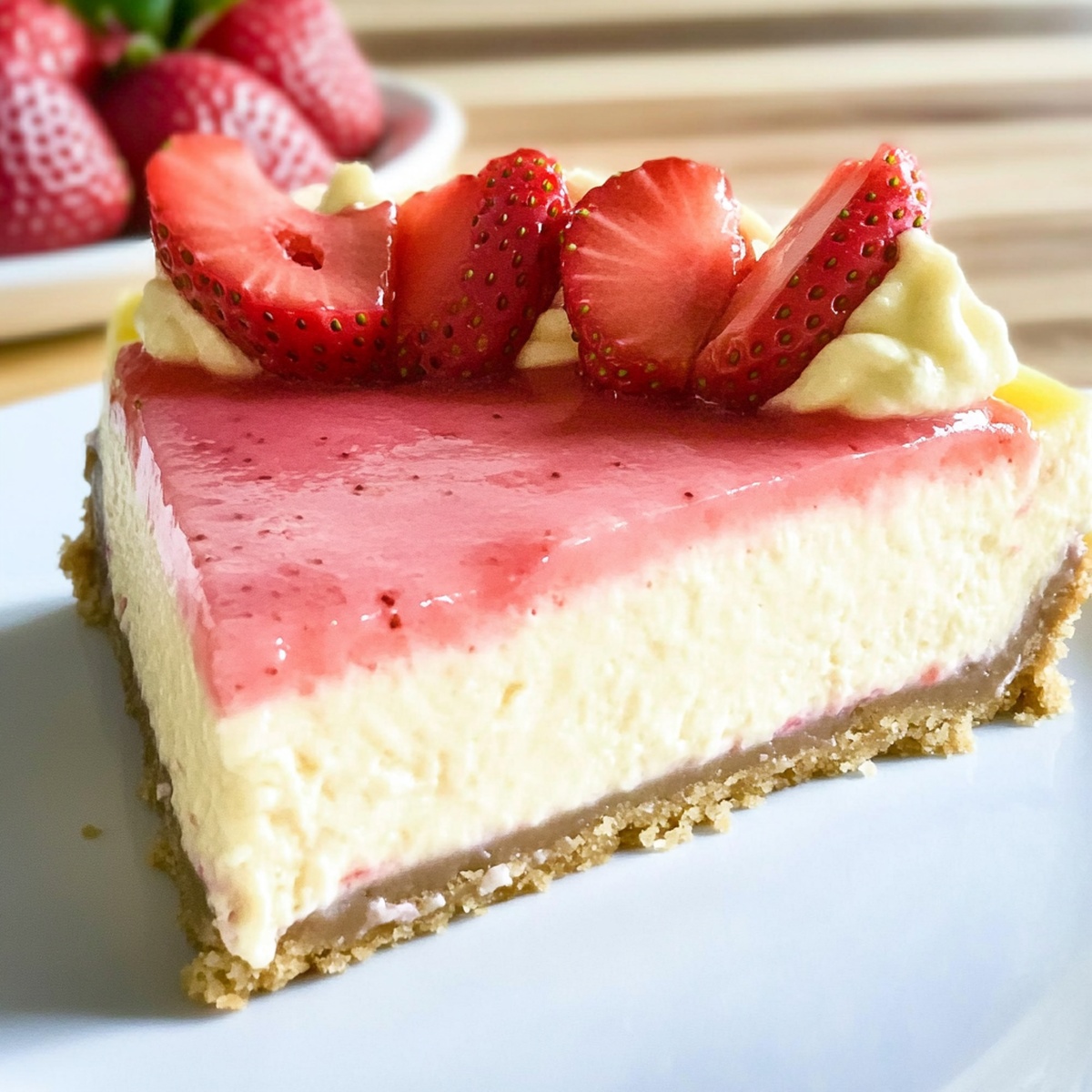
Strawberry Lemon Cheesecake
Equipment
- 20cm loose bottom or springform tin
- Stand mixer
- Saucepan
- Mixing bowls
Ingredients
Crust:
- 300 grams crushed digestive biscuits
- 60 grams melted butter
- 2 tablespoons light brown sugar
Lemon Cheesecake Layer:
- 7 grams gelatin powder
- 60 ml water (for gelatin)
- 250 grams cream cheese
- 250 grams mascarpone
- 150 grams caster sugar (for lemon layer)
- Juice from 1 lemon
- 1 teaspoon lemon extract
- 300 ml whipped cream (for lemon layer)
Strawberry Cheesecake Layer:
- 200 grams strawberries
- 100 grams sugar (for strawberry layer)
- 60 ml water (for strawberry layer)
- 3 teaspoons cornflour
- 1 teaspoon vanilla extract
- 300 ml whipped cream (for strawberry layer)
- 7 grams gelatin powder (for strawberry layer)
- 60 ml water (for strawberry gelatin)
- Whipped cream to decorate
Instructions
- Begin by combining the crushed digestive biscuits with melted butter and light brown sugar in a bowl until the mixture is damp. Press the blend into the base and slightly up the edges of a 20cm springform tin. Refrigerate while you prepare the filling.
For Lemon Cheesecake Layer:
- In a small bowl, whisk the gelatin with 60 ml of water and allow it to bloom. Microwave for about 15 seconds until fully melted.
- In a mixing bowl, combine mascarpone, cream cheese, 150 grams of caster sugar, lemon juice, and lemon extract until smooth. In a stand mixer, whip the cream until soft peaks appear, then mix in the cooled gelatin and continue to whip until stiff peaks form. Carefully fold the whipped cream into the cheese mixture. Pour this filling onto the biscuit base and smooth it out. Refrigerate for approximately 4 hours.
For Strawberry Cheesecake Layer:
- In a saucepan, combine strawberries with 100 grams of sugar, stirring gently. Cook over medium heat for about 5 minutes, then add lemon juice. In a separate bowl, blend the 60 ml water with cornflour. Gradually incorporate this into the strawberry mixture, whisking until the sauce thickens, then remove from heat and cool to room temperature before chilling it.
- In another bowl, beat mascarpone, cream cheese, the remaining caster sugar, and vanilla extract until smooth. Combine with the cooled strawberry compote. In a stand mixer, whip the cream until soft peaks form, add the cooled gelatin, and continue until stiff peaks form. Gently mix this into the strawberry cream mixture. Pour this layer over the lemon cheesecake and smooth it out. Cover and chill in the refrigerator for another 4 hours.
- When ready to serve, decorate with whipped cream swirls. The cheesecake can be stored in the refrigerator for up to 3 days and freezes well for future enjoyment!
